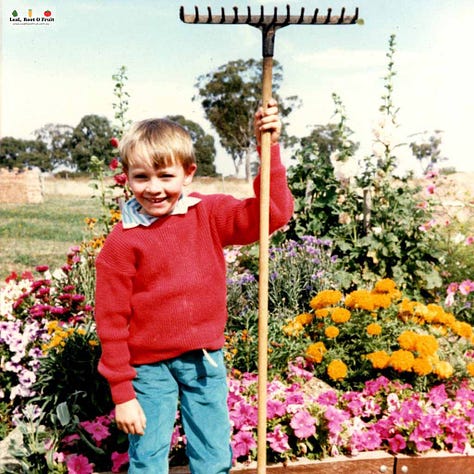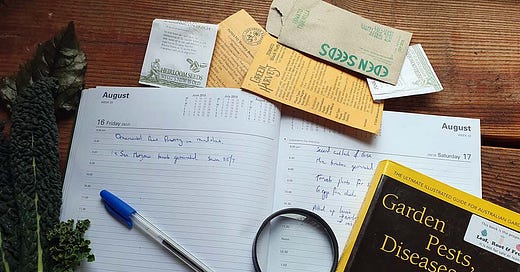Recording Garden Observations
Part Ten of the Vegetable Patch from Scratch Series
Observation leads to improved gardening success. Observation is how you learn. The more you observe, the quicker you will “learn” better gardening practices.
I have a confession to make: I’ve never formally studied horticulture. Sure, I have a Bachelor of Science with a major in botany. This helps me to understand plants and how they grow. But no one has ever taught me how to be a gardener. I’m a kinaesthetic learner, which means I learn best through movement and hands-on experience. I learnt how to plant and tend a garden by doing it, and I've been tending plants and growing food since I was very young. (You can read more about my personal gardening journey here)



I thought I knew a lot about growing food when I first started Leaf Root & Fruit back in 2014. I quickly discovered there was so much more that I didn't know. Suddenly, I was growing food in 30 different gardens across Melbourne. It was like have 30 different scientific laboratories to experiment within. This presented me with an opportunity to observe two things: variations between the gardens and consistency across all the gardens.
I quickly began to see what mattered when it comes to gardening and more importantly what didn't.
Operating this vegetable garden maintenance service wasn’t really financially viable in the long term. However, it accelerated my learning very rapidly. I consolidated this learning by recording my observations. Recording data allowed me to observe patterns, identify successes and avoid repeating any failures.
Today's post encourages you to hone your garden observations and record them. This will be the key to discovering your own phenological indicators, reducing feasts and famines, and improving many aspects of your gardening success.
What do you see?
Developing keen observation skills enables us to see patterns emerge. Understanding these patterns can help us plan gardening activities for greater success. It can also help us work out when to take action and when to “do nothing gardening”.
You may notice, for example, that aphids tend to flourish at certain times of the year. You may also notice that when an aphid outbreak occurs, predatory insects such as ladybirds soon follow. Four to six weeks later the aphids will pretty much disappear and the plants will be covered in ladybirds instead.

Observations are all about perspective and timing. We are constantly seeing things in the garden but not always consciously observing them. Recording your observations will give you a powerful data set for the future. The best time to start recording observations is immediately!
Being observant not only helps us to learn to be better gardeners. It is also a form of mindfulness that encourages us to further appreciate our surroundings and connect with nature.
There are many methods you can use to record observations. Whatever recording method you choose, it needs to be workable for you. Different methods will suit different personality types and lifestyles. If the method you choose is not personally sustainable long term then you may as well not waste time starting. It is unlikely that you will persist long enough to gain valuable data. Here are some methods worth considering.
I’ve included some of my templates for paid subscribers to download at the end of the article.




